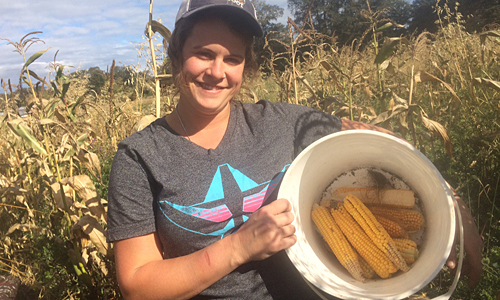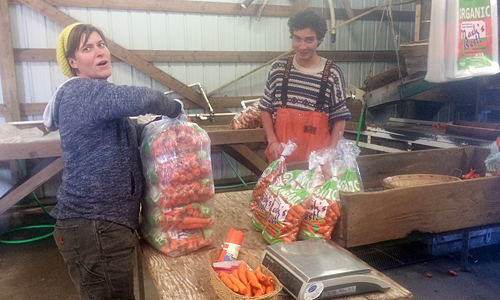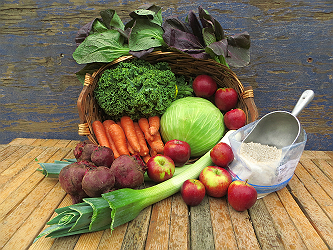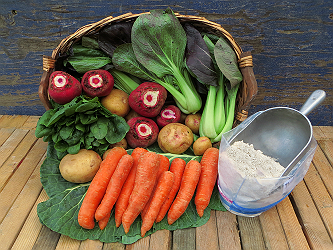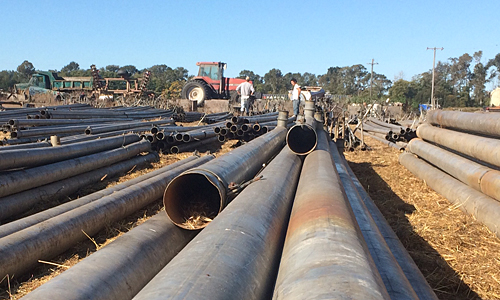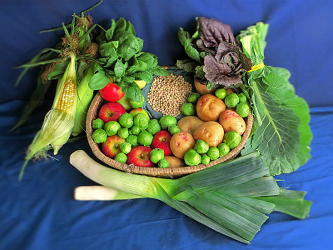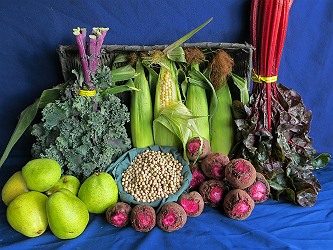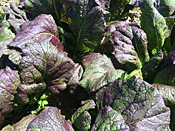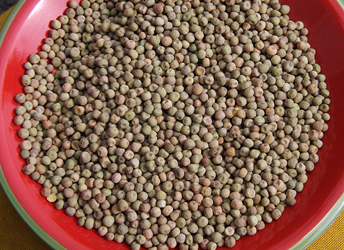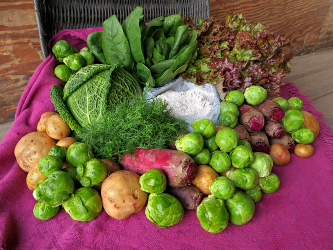
Standard
Spinach 1 bu
Cylinder Beets 3 lbs
Potatoes 3 lbs
Savoy Cabbage 1 hd
Baby Dill 1 bu
Rye Flour 2 lbs
Red Leaf Lettuce 1 hd
from River Run Farm
Brussels Sprouts 2 lbs
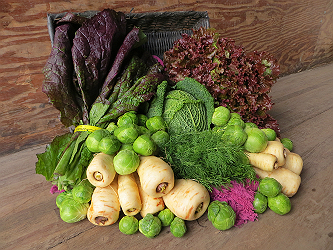
Small
Red Mustard Greens 1 bu
Parsnips 2.5 lbs
Savoy Cabbage 1 hd
Baby Dill 1 bu
Red Leaf Lettuce 1 hd
from River Run Farm
Brussels Sprouts 1.5 lbs
Roasted Beet & Brussels Sprout Salad
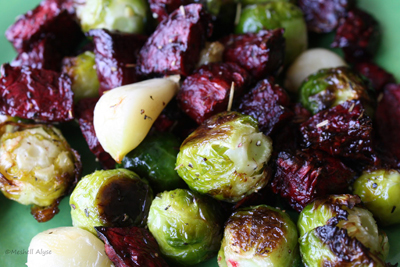
½ to 1 pound bacon
6 to 8 beets, cubed
1 pound Brussels sprouts, trimmed
1 medium white onion, thinly sliced
6 cloves garlic, whole
3 teaspoons thyme
Sea salt and freshly ground black pepper
3 tablespoons olive oil, divided
1 to 2 cups mixed salad greens
½ cup almonds, chopped (or substitute another nut)
Cook the bacon to your personal preference and set aside.
Preheat the oven at 400°F. In a large roasting pan, add the beets, Brussels sprouts, onion, garlic, thyme, and salt and pepper, and toss with 1 to 2 tablespoons of the olive oil, coating evenly. (If you’re using red beets, they will bleed red onto the other vegetables as you mix them. To avoid this, toss the beets separately with oil, salt, and pepper and bake them in another pan—or just keep them to one side of the larger roasting pan.)
Roast the vegetables uncovered in the oven until they have softened and browned—approximately 30 minutes. Remove the vegetables from the oven. Crumble and stir in the bacon. Allow to cool slightly.
Arrange the mixed greens on a serving plate and top with the vegetables. Sprinkle the almonds over the vegetables and finish by drizzling the remaining olive oil over the entire dish.
Serves 12 as a side dish, 4 to 6 as a main dish
Annie McHale, the chef who originated this recipe, lived in Port Angeles and did recipes and cooking demos for Nash’s Farm Store for about a year. She has since moved to Portland, OR, and we miss her! This recipe appears in Bounty from the Box: The CSA Farm Cookbook, by Mi Ae Lipe
Rye Flour
Rye is one of the top five most consumed cereals on the planet. It is grown extensively throughout the world and is very similar to wheat and barley, so it has many of the same applications. You can find it being used for animal feed, a base for whiskey, and especially for different types of bread and crackers.
Rye was widely cultivated in Roman times, but it was likely grown far earlier, given how easy it is to grow and how hardy it is as an agricultural staple.
Some of its health benefits include helping the efficiency of the digestive system, preventing gallstones, lowering the risk of diabetes, lowering blood pressure, and protecting cardiovascular health.
New York Style Rye Crackers
1 cup rye flour
1 cup all-purpose flour, like Nash’s white or triticale
1 Tbsp. caraway seed
1 1/2 tsp. salt
1 tsp. onion powder
1 tsp. garlic powder
1/3 cup vegetable oil
1 tsp. honey
1/4 cup water, or as needed
Combine the rye flour, all-purpose flour, caraway seed, salt, onion powder, and garlic powder in a bowl. Stir in the vegetable oil and honey. While stirring with a fork, slowly add the water until the dough comes together in a ball. Cover and rest for 10 minutes.
Preheat oven to 375 degrees F. Divide the dough into 4 sections, rolling each piece out on parchment paper to 1/8 inch thick. Cut into desired shape then place on a baking sheet. Prick each cracker a few times with a fork.
Bake in the preheated oven until the edges are brown and the crackers are crisp, 10 to 12 minutes. Remove immediately to a cooling rack.
Recipe from allrecipes.com
